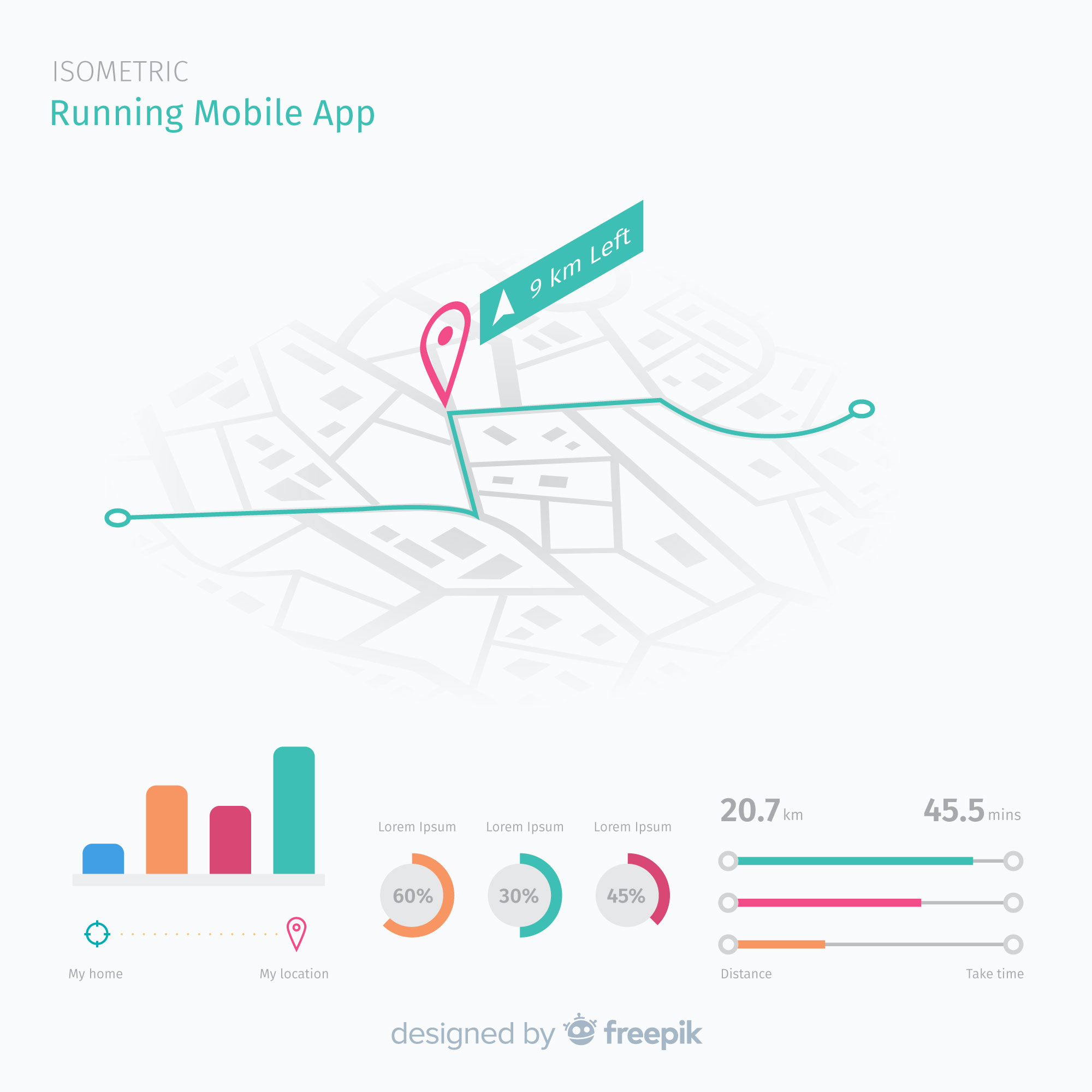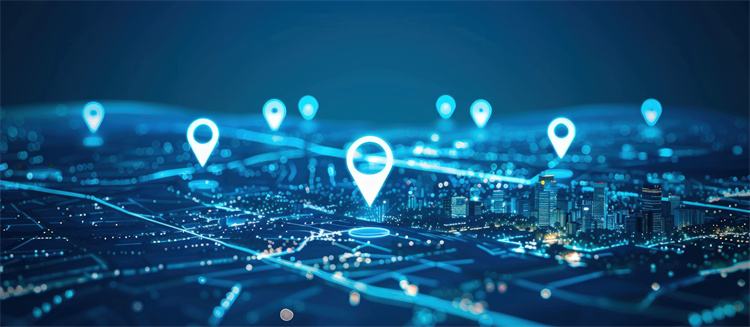Harnessing Location Data for Smarter Logistics Operations

Location data serves as a cornerstone in modern logistics, driving efficiency and precision. Businesses leverage geospatial data integration to achieve heightened efficiency, cost savings, and customer satisfaction. Technological advancements have paved the way for smarter operations, enabling logistics companies to optimize routes and reduce transportation costs. Location intelligence in logistic solutions enhances decision-making and operational efficiency. This intelligence empowers businesses to improve delivery performance and lower carbon emissions. Companies harness these insights to transform logistics into a more efficient and customer-focused industry.
Understanding Location Data in Logistics
Definition and Types of Location Data

Location data plays a pivotal role in logistics operations. It encompasses various technologies that provide precise geographical information. Two primary types of location data include GPS and geofencing, as well as RFID and IoT sensors.
GPS and Geofencing
GPS technology offers real-time positioning and navigation capabilities. It allows logistics companies to track vehicles and shipments accurately. This technology enhances route planning and reduces transit times. Geofencing creates virtual boundaries around specific geographic areas. When a vehicle enters or exits these areas, the system triggers alerts. Geofencing optimizes efficiency, safety, and customer satisfaction through innovative applications.
RFID and IoT Sensors
RFID (Radio Frequency Identification) uses electromagnetic fields to identify and track tags attached to objects. It provides accurate data on inventory levels and asset locations. IoT sensors collect and transmit data about environmental conditions and equipment status. These sensors enable real-time monitoring and improve decision-making capabilities. The integration of AI and geospatial data in logistics leads to superior operational efficiency and cost reduction.
Role of Location Data in Supply Chain Management
Location data significantly impacts supply chain management. It facilitates real-time tracking and monitoring, as well as route optimization and planning.
Real-time Tracking and Monitoring
Real-time tracking provides visibility into the movement of goods. It ensures timely deliveries and enhances inventory management. IoT devices play a crucial role in this process. They offer continuous updates on shipment status and location. This capability leads to better inventory management and optimized supply chain operations.
Route Optimization and Planning
Route optimization involves using data analytics to determine the most efficient transportation routes. Big Data analytics optimize route planning, scheduling, and carrier selection. This approach enhances efficiency and reduces costs. Companies can improve customer experiences by minimizing delivery times and ensuring timely arrivals. Data analytics in logistics also predict future market behavior, leading to more efficient operations.
Technologies Enabling Smarter Logistics
Advanced Analytics and Machine Learning
Advanced analytics and machine learning revolutionize logistics operations. These technologies provide insights that enhance decision-making and operational efficiency.
Predictive Analytics for Demand Forecasting
Predictive analytics uses historical data to forecast future demand. Logistics companies analyze patterns to anticipate customer needs. This approach optimizes inventory levels and reduces waste. Companies achieve cost savings and improve service quality through accurate demand predictions.
Machine Learning for Route Optimization
Machine learning algorithms process vast amounts of data to optimize routes. Logistics companies use these algorithms to identify the most efficient paths. This optimization reduces fuel consumption and transit times. Improved route planning enhances delivery reliability and customer satisfaction.
Integration with IoT and Cloud Computing
Integration with IoT and cloud computing transforms logistics operations. These technologies enable real-time data collection and processing.
IoT Devices for Data Collection
IoT devices gather data from various sources in logistics networks. Sensors monitor environmental conditions and equipment status. Real-time data collection improves tracking and monitoring of shipments. Enhanced visibility leads to better inventory management and operational efficiency.
Cloud Platforms for Data Processing
Cloud platforms store and process large volumes of data. Logistics companies utilize these platforms for scalable data analysis. Cloud computing enables quick access to insights and facilitates collaboration. Efficient data processing supports informed decision-making and strategic planning.
Practical Applications and Case Studies
Case Study: FedEx and Location Data Utilization
Challenges Faced
FedEx encountered several challenges in logistics operations. The company struggled with supply chain visibility. Inefficient tracking of shipments led to delays. Customers experienced dissatisfaction due to late deliveries. FedEx needed a solution to enhance operational efficiency.
Solutions Implemented
FedEx implemented advanced technologies to address these challenges. The company introduced the FedEx Surround system. This system uses location data for real-time analytics. FedEx improved shipment tracking and supply chain visibility. The company achieved timely deliveries and increased customer satisfaction. FedEx's approach set a benchmark in logistics innovation.
Future Trends in Logistics Operations
Autonomous Vehicles and Drones
Autonomous vehicles represent a significant trend in logistics. These vehicles offer potential for cost reduction. Companies can achieve faster deliveries with autonomous technology. Drones also play a crucial role in future logistics. Drones provide quick and efficient delivery solutions. Businesses can reach remote areas with ease using drones.
Blockchain for Secure Data Sharing
Blockchain technology enhances data security in logistics. Companies use blockchain for transparent data sharing. This technology ensures data integrity and reduces fraud. Logistics operations benefit from secure transactions. Blockchain fosters trust among stakeholders in the supply chain.
Location Intelligence in Logistic Solutions

Enhancing Operational Efficiency
Real-time Data Analysis
Location intelligence in logistic solutions provides real-time data analysis, which is crucial for operational efficiency. Geospatial data offers logistics companies a reliable method to optimize delivery schedules and monitor shipments in real time. Analyzing location information allows businesses to identify efficient routes and estimate delivery times accurately. This enhances overall operational efficiency and reduces costs. Companies can predict upcoming changes and increase traceability within their supply chains. This predictive capability helps reduce risks and understand anomalies in supply chain activities.
Improved Route Planning
Improved route planning stands as a significant benefit of location intelligence in logistic solutions. Advanced GIS-based tools allow logistics companies to leverage geospatial data integration fully. By combining real-time location data with AI-driven analytics, platforms enable more accurate route planning. Data analytics tools analyze traffic patterns, delivery windows, and vehicle capacities to determine the most efficient routes for deliveries. This reduces fuel consumption and transit times. Enhanced route planning ensures timely deliveries, boosting customer satisfaction.
Customer-Centric Logistics
Personalized Delivery Options
Location intelligence in logistic solutions enables personalized delivery options. The integration of AI and geospatial data empowers logistics companies to offer tailored delivery services. Businesses can provide customers with flexible delivery windows and preferred drop-off locations. Personalized delivery options enhance the customer experience by meeting individual preferences and needs. This customer-centric approach fosters loyalty and increases satisfaction.
Enhanced Customer Experience
An enhanced customer experience results from the effective use of location intelligence in logistic solutions. Real-time tracking and monitoring provide customers with visibility into their shipments. Customers receive updates on delivery status and estimated arrival times. This transparency builds trust and confidence in the logistics process. Companies that utilize location intelligence create a seamless and efficient delivery experience for their customers.
Location data has revolutionized logistics by enhancing operational efficiency and customer satisfaction. Companies use geospatial data to optimize routes and reduce costs. The future of logistics lies in integrating AI with geospatial data. This combination achieves unprecedented operational efficiency. Location intelligence transforms logistics into a more efficient, customer-focused industry. Businesses leverage these insights to improve delivery performance and reduce carbon emissions. The potential for location intelligence in logistics remains vast and promising.
See Also
Unlocking AI's Potential: Revolutionizing Logistics Operations
Boosting Efficiency: Robotics in Logistics Warehouses
Paving the Way: Digital Technology in Future Logistics
Cracking the Code: JUSDA's Innovative Manufacturing Logistics
Steering Towards Success: Lean Logistics in High-Tech Manufacturing
